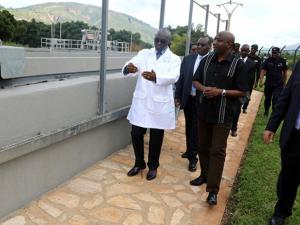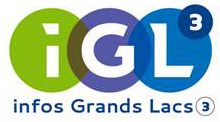
Nzove water plants get upgrade, Kigali nears 100% water access
Government will strive to ensure universal access to water by 2024 by increasing investment in construction and extension of water supply systems in different parts across the country.
The commitment was reaffirmed by the Prime Minister, Édouard Ngirente, during the inauguration of the new Nzove Water Treatment Plant and the upgrading of Nzove II in Kigali on Monday.
The Premier said that to attain such an ambition requires the involvement and commitment of both Government and development partners in the water sector as well as citizens.
“The upgraded Nzove Water Treatment Plants are a major milestone in providing access to clean drinking water to our citizens,” premier said.
He said the both projects are particularly important for the city residents living in Nyamirambo and Gikondo areas as they have been experiencing acute shortage of clean water.
The Nzove I Water Treatment Plant which has been pumping 40,000 cubic meters per day and was upgraded to produce 65,000 while Nzove II was upgraded from 25,000 to 40,000 cubic meters per day.
The facilities we are inaugurating today were constructed by Culligan International East Africa and Central Asia at a tune of $40.2million funded by the government of Rwanda, according to Infrastructure Minister Claver Gatete.
The investment includes forwarding infrastructure to Mont Kigali and Rebero reservoirs.
Meanwhile, the government also plans to upgrade Nzove ESPINA from 25,000 to 40,000 cubic meters per day and make it cheap to operate once completed.
Once the latter is completed, it will bring the total water production capacity to 145,000 cubic meters only for Nzove Catchment, according to official information.
It will also fully address the issue of water shortage in in Kigali once combined with other sources as well as construction of forwarding infrastructure and distribution network, according to Water and Sanitation Corporation (WASAC).
Ngirente however said that the country is still faced with challenges of poor and old infrastructure to avail water to all citizens, especially in Kigali and other secondary cities which keep growing but said there are various projects in the pipeline to address the issue.
“Our target is to do all possible to avail water to all, to achieve this there will be construction new water treatment plants as well as upgrading the existing ones in rural, small cities, secondary cities as well as in the city of Kigali,” he said.
More projects
According to the minister Gatete, several projects to address water shortage are on-going while plans are underway to embark on new projects.
He said that the Government had secured two loans from the African Development Bank (AfDB); one of $268.5 million and another of $131 million and are sourcing from different development partners to implement a number of projects.
Such projects, he said include upgrading, rehabilitation and extension of Kigali Water Supply Network of 568 Km by AfDB to complete by December next year.
The project is expected to boost water supply in in Kigali suburbs including Kabeza, Samuduha, Busanza and Kanombe, according to the minister.
Others are construction of Nzove–Ntora forwarding infrastructure which would evacuate 70,000 cubic meters and is expected to be completed by September 2021 under the support of Japanese Government.
The government also plans to generate 40,000 cubic metres from Kanzenze (Metito) water treatment plant under Public Private Partnership (PPP) framework to supply City of Kigali and parts of Bugesera District, and this is expected to be commissioned in June 2020.
In rural areas, the Government water supply projects include among others, the rehabilitation and Expansion of Gihira water treatment plant to 15,000 cubic meters per day to supply different areas in Rubavu district.
The government also intends to invest in rehabilitation and expansion of Distribution networks in six secondary cities namely Musanze, Rubavu, Rusizi, Muhanga, Nyagatare and Huye districts totalling of 1,112 km.
They include Mwoya water treatment plant of 3,000m3 Cubic meters per day which would supply Rusizi areas.
Others include Ngoma treatment plant of 12,000 cubic meters per day to serve Nyagatare district.
Other parts such as Gatsibo and Kayonza district are set to benefit from Muhazi water treatment plant of 10,000 cubic meters per day to serve, according to the officials.
Sake water treatment plant of 6,000 cubic meters per day will serve Ngoma District.
Residents of Muhanga and Kamonyi will benefit from Kagaga water treatment plant whose capacity of 9,000 cubic meters per day according to the officials.
Busogwe water treatment plant of 12,000 cubic meters will serve Ruhango and Nyanza district while Mushogoro water treatment plant of with 7,000 cubic meters per day will serve Karongi and Rutsiro districts.
“The construction of all these water treatment plants as well as forwarding infrastructure will be completed in 2022,” said the minister Gatete.
Households accessing improved source of water is 85 per cent countrywide
